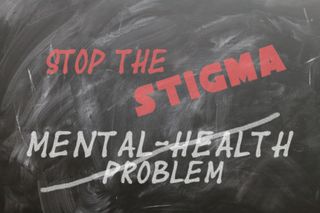Students across the U.S. and globe are experiencing a mental health crisis that was exasperated but not, experts agree, caused by the pandemic.
During a recent Tech & Learning webinar, hosted by Dr. Kecia Ray, a team of panelists discussed how cultural shifts and tech tools paired with teacher, parent, and student education can help lead to healthier, happier, and ultimately, more academically successful students.
Watch the full webinar here.
Key Takeaways
Sobering Statistics
Dr. Nicole Cobb, associate chair of the Department of Human and Organizational Development at Vanderbilt University, began the webinar by sharing a number of stark statistics around student well-being.
“Over the last year or two, 70% of public school students have been asking for more mental health support at school and in their communities,” she said. “Thirty-two percent of students say they are stressed out. Eighty-three percent say that they have physical symptoms related to their anxiety, their stress, their depression, and 42% say they feel persistently sad and hopeless, and they do not see it getting better.”
In addition, Cobb shared how research indicates one in five students have seriously considered or attempted suicide. “Suicide is the fourth-leading cause of death between 15 and 29-year-olds. These statistics, just tell us that this is a real problem. This is not passing. COVID only heightened our awareness of this, but it is something in our country and even globally, we've been struggling to address for quite some time now.”
Prerequisite for Learning
As educators know, anxiety, stress, and trauma are not only harmful to kids mentally and physically but also academically. “If we're not working our way through and healing our stress and trauma, we can get to the point where we are not able to learn in meaningful ways,” said Dr. Kathryn Kennedy, founder and executive director of Wellness for Educators & Consult4Ed Group. “The healing process needs to include not just the cognitive healing, but also bodily healing, because trauma and stress are not just stored in our minds, but also in our physical bodies.”
She added, “When safety, community, and relationships are strong, that's when learning can actually take place.”
It’s Okay Not to Be Okay
The first step to solving these problems is creating space within a district’s culture to discuss feelings. “What we need to do as districts or schools, or even just in the classroom, is to normalize not being okay,” said Michael Garcia, a counselor and owner of Paradigm Counseling & Consulting, PLLC, who specializes in the treatment of children and adolescents in trauma and their families. Garcia added, “It's okay to not be okay. We can talk about this. We can openly use our words to say, 'This is how I feel.'”
Providing professional development and educating teachers about trauma-informed practices is a key component in building this type of culture, Garcia said. “So when little Johnny is in the classroom, getting these big feelings and these big behaviors, then we can keep our calm. We can be curious about ‘Hey, what is it you need right now?’ and create this culture of meeting needs.”
Being Proactive Rather Than Reactive
Many schools use digital monitoring tools, except education is not yet getting the most out of these tools, said Channing Anderson, product engagement manager at Impero.
“Districts buy these things and they use them reactively, they wait until a student does something wrong or something bad and they go and find the evidence and then they come to that student,” she said.
These tools can be more powerful and helpful if they are used preventatively. In this way, the focus can be on education rather than punishment.
“Whenever we use these tools to punish students or to control students, and to try to control their online behavior, we're actually not shaping their behavior at all,” she said. “We're not doing anything to help them learn how to navigate their online life. When we use these tools in a proactive way to learn more about the students, then we are helping these students learn how to navigate the challenges that come with living online.”

